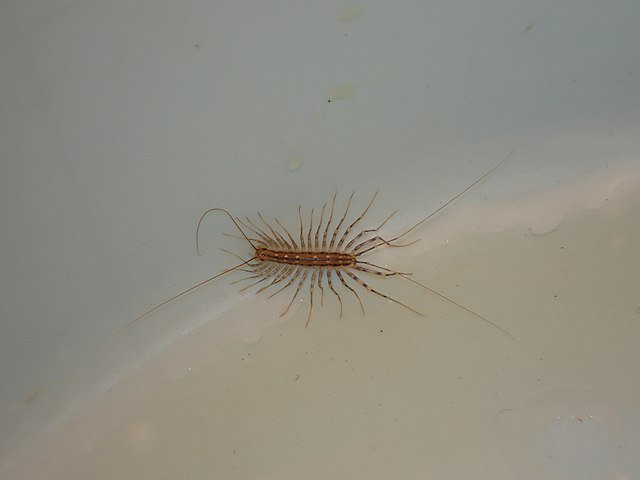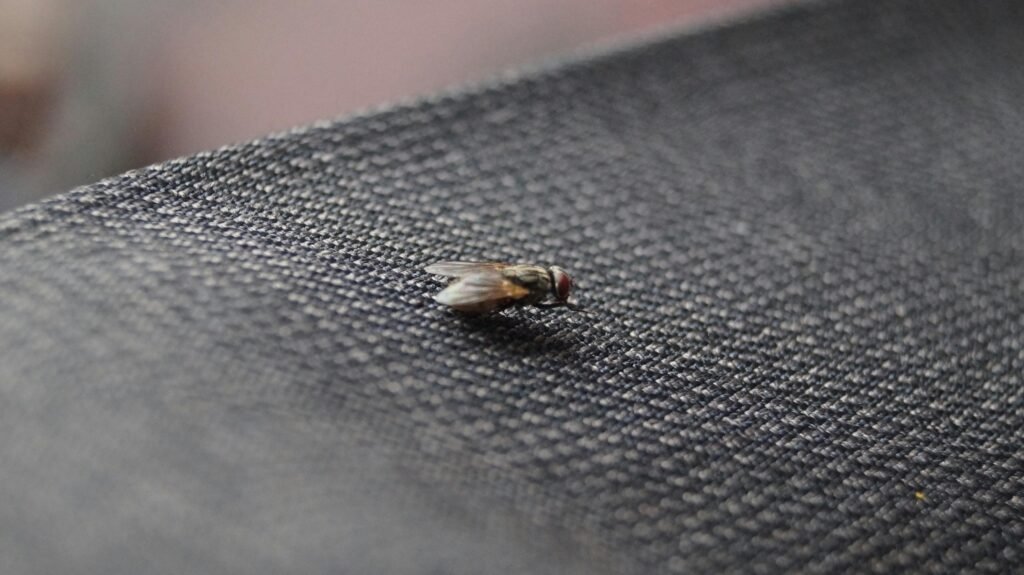How to Get Rid of Silverfish in Your Home
 Silverfish (Lepisma saccharinum) are small, wingless insects that belong to the order Zygentoma. Their name comes from their shiny, silver-gray color and fish-like movements. They are ancient insects, existing for more than 400 million years, and are found across the globe in both temperate and tropical regions. Although they do not carry diseases like cockroaches or mosquitoes, silverfish are destructive to household materials and can be very difficult to eliminate once established.
Silverfish (Lepisma saccharinum) are small, wingless insects that belong to the order Zygentoma. Their name comes from their shiny, silver-gray color and fish-like movements. They are ancient insects, existing for more than 400 million years, and are found across the globe in both temperate and tropical regions. Although they do not carry diseases like cockroaches or mosquitoes, silverfish are destructive to household materials and can be very difficult to eliminate once established.
Signs of Silverfish Infestation
Recognizing the signs early is important to prevent damage. The most common indicators include:
- Droppings: Tiny black pellets, similar to ground pepper, often found near infested areas.
- Yellow stains: Discoloration left behind on paper, cardboard, or fabric where they feed.
- Shed skins: As silverfish grow, they molt and leave behind delicate, scale-like skins.
- Damage to items: Irregular holes in wallpaper, books, cardboard boxes, photographs, and even clothing.
The damage may be mistaken for mold or water stains, so checking carefully is important. Unlike termites, silverfish do not structurally damage wood but instead feed on starches, sugars, and cellulose-based products.
Why Do Silverfish Come Into Houses
Silverfish thrive in environments that combine high humidity, warmth, and available food sources. Typical reasons they invade homes include:
- Moisture problems: Leaking pipes, damp basements, poorly ventilated bathrooms.
- Stored materials: Cardboard boxes, piles of paper, or old clothing provide shelter and food.
- Climate: In humid regions like the southern USA, Southeast Asia, or coastal Australia, silverfish infestations are more frequent and severe.
- Seasonal activity: They are active year-round indoors, but activity may increase during rainy seasons or when humidity rises.
Understanding these attractants is the first step in preventing infestations.
How to Get Rid of Silverfish
Reduce Moisture
Moisture control is the most important step, since silverfish cannot survive in dry conditions.
- Use a dehumidifier in basements, laundry rooms, and attics.
- Fix plumbing leaks and seal condensation-prone pipes.
- Install proper ventilation fans in kitchens and bathrooms.
- Keep rooms warm and dry during winter to reduce condensation.
Clean and Declutter
Sanitation does not directly kill silverfish but makes the environment less hospitable.
- Store paper, photographs, and books in plastic bins with tight lids.
- Avoid storing cardboard boxes directly on basement or garage floors.
- Vacuum cracks, baseboards, and behind furniture regularly to remove food particles and eggs.
- Seal dry foods such as cereals, pasta, and flour in airtight containers.
Natural Silverfish Remedies
Some natural approaches can repel or kill silverfish without chemicals:
- Diatomaceous earth: A natural powder made of fossilized algae. When silverfish walk over it, it damages their exoskeleton, causing them to dry out.
- Essential oils: Clove, cinnamon, or lavender oil sprays can repel silverfish. These do not kill but reduce activity in treated areas.
- Cedar wood: Cedar blocks, chips, or shavings placed in closets or storage areas repel insects with their aroma.
While natural remedies are safer, they often require regular application and may not eliminate large infestations.
DIY Silverfish Traps
Homemade and store-bought traps can reduce population numbers:
- Jar trap: Wrap tape around the outside of a glass jar to help silverfish climb in, then place a piece of bread or cereal inside. Once inside, they cannot climb out of the smooth glass.
- Sticky traps: Available at hardware stores, they catch insects that crawl across them. Place near walls, corners, or under sinks where activity is high.
- Flour and water paste: Spread on index cards to lure silverfish. They get stuck in the paste and die.
Traps alone are not a complete solution but help reduce numbers when combined with other methods.
Chemical Options
Chemical control should be a last step when other measures fail.
- Insecticidal dusts: Boric acid and pyrethroid-based powders can be applied into wall voids, cracks, and crevices. They are effective but must be kept away from children and pets.
- Residual sprays: Approved insecticides can provide long-lasting protection on baseboards, corners, and storage areas. Always read and follow the label instructions.
- Legal considerations: In many countries, including the USA, Canada, and EU states, pesticide use is tightly regulated. Homeowners should use only products specifically labeled for indoor silverfish control.
When to Call Pest Control
Professional intervention is necessary if:
- Silverfish are found in multiple rooms.
- Infestations continue despite DIY efforts.
- Valuable materials such as rare books, archives, or clothing are at risk.
- The property is humid year-round, making long-term control difficult.
Licensed pest control experts can apply stronger, professional-grade insecticides and perform thorough inspections to find hidden infestations in walls or attics.
Q&A
How to get rid of silverfish naturally
The best natural methods include reducing humidity, using diatomaceous earth in cracks and corners, and placing cedar wood in storage areas. These approaches work best as prevention and population reduction but may not completely eradicate large infestations.
Do silverfish bite humans
No. Silverfish do not bite or sting. They do not transmit diseases. Their impact is mainly economic and cosmetic, as they destroy paper, fabrics, and food packaging.
Why do I have silverfish in my bathroom
Bathrooms are warm and humid, creating an ideal habitat. Leaky pipes, wet towels, or poor ventilation make bathrooms a silverfish hotspot. Installing a vent fan and keeping the area dry is key to prevention.
What kills silverfish instantly
Contact sprays containing pyrethroids can kill silverfish on sight. However, instant kill products do not solve the infestation unless combined with long-term prevention methods such as humidity reduction and sealing entry points.
Are silverfish common in Australia and the USA
Yes. Silverfish are found worldwide, including the USA, Canada, Europe, Australia, and Asia. In the USA, they are more common in humid southern states. In Australia, they are frequent in coastal cities like Sydney and Brisbane due to high humidity.
Want to learn more? Check out our blog for other common household insects and how to control them.
Disclaimer
This article is for informational purposes only. Pest control laws and approved chemicals vary by country. For best results and legal safety, we strongly recommend contacting a licensed pest control professional in your local area. Always make sure that the pest control technician is properly certified or licensed, depending on your country’s regulations. It’s important to confirm that they only use approved products and apply them exactly as instructed on the product label. In most places in Europe, UK, or USA, following label directions is not just best practice—it’s the law.
Sources:
- Wikipedia, Lepisma saccharinum, τάξη Zygentoma
- Silverfish and Firebrats
- Norwegian Institute of Public Health. Long‑tailed silverfish (Ctenolepisma longicaudata) – biology and control
Nasos Iliopoulos
MSc Agronomist & Certified Pest Control Expert
Scientific Director, Advance Services (Athens, Greece)
Licensed Pest Control Business – Ministry of Rural Development & Food (GR)


